JAMAICA | Annie Palmer, a Sinister Witch or a Commercial Concoction?
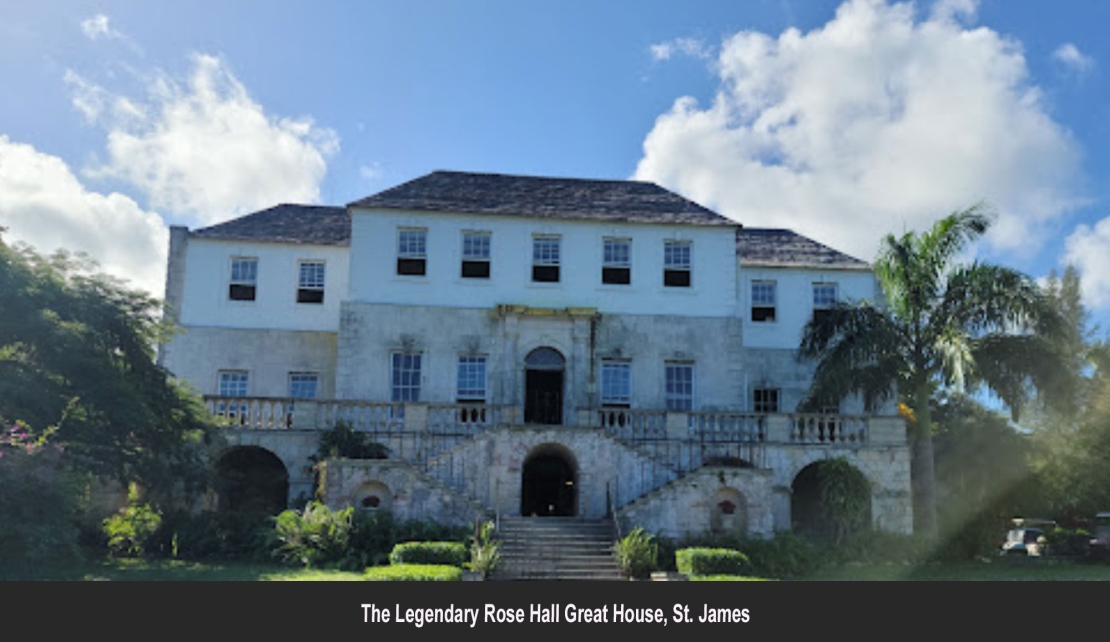
MONTEGO BAY, Jamaica, September 9, 2022 - The White Witch of Rose Hall represents one of the most interesting tourist attractions in Jamaica. It's a peddled melodramatic legend of Annie Palmer as the White Witch, “a woman of unknown origins and of sinister beauty, who murdered husbands and lovers and was in turn murdered by her slaves as a retribution for her wickedness.”
Now, a country’s tourism is not only reflected in its beaches, hotels and allied attractions, but for the most part, in that country's history and culture.
While in many countries, their historic monuments are preserved and placed on display, and their culture is sold as a part of the tourism package, Jamaica is yet to fully develop its heritage tourism portfolio as many of its historic monuments continue to deteriorate, and its cultural offerings are yet to be properly exploited.
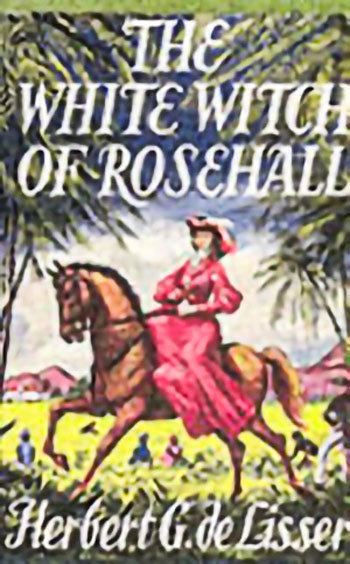
One of the most exploited heritage tourism attractions has been the Rose Hall Great House and its fable of the White Witch of Rose Hall, and its main protagonist Annie Palmer, that has grabbed the attention of locals and foreigners alike.
Thought to be one of the country's most impressive plantation great houses, it had fallen into ruins by the 1960s.
Rose Hall was bought in 1977 by former Michele Rollins and her entrepreneur husband John Rollins a former Governor in the US, who refurbished it and conceptualised a tour and museum that showcase Rose Hall's slave history, antique splendor and original fittings.
The museum showcases the slave history of the estate and the legend of the White Witch of Rose Hall.
A former Assistant Archivist at the Jamaica Archives, Geoffery S. Yates, who decided to do a ‘deep-dive’ into the credibility of the Annie Palmer legend, and after interrogating the evidence arrived at a conclusion.
“I come forward to brave the belief of the public and state categorically that neither Mrs. Rosa Palmer nor Mrs. Annie Mary Palmer was ever murdered by slaves at Rose Hall or Palmyra, that there is no evidence that either of them was involved in debauchery or unnatural cruelty, and that the commonly held tales of luxury and murders are without any foundation whatsoever,” Yates said.
In an article entitled, “Rose Hall, Death of a Legend,” Yates said “I rest my case on official archival evidence which has never before been examined in detail.
“I must also state that neither was Mrs. Palmer ever known to her slaves or contemporaries as "The White Witch of Rose Hall."
This title was invented by H.G. DeLisser for his novel which was published in 1929, almost 100 years after the abolition of slavery.”
The history of Rose Hall indicates that Rose Hall was built by the Hon. John Palmer, Custos of St. James, somewhere between 1770 and 1780, on the site of a previous residence which was also known as Rose Hall, after its mistress Rosa Kelly.
Rosa Kelly was the Hon. John Palmer's second wife, whilst he was her fourth husband, and they had been married 25 years when she died in 1790. Her monument in the parish church at Montego Bay is well-known.
Shortly after Rosa's death, the Custos Palmer married a young bride, Rebecca Ann James, of a prominent family. In 1797 Custos Palmer died at his Brandon Hill residence and almost immediately Rebecca went to England, where she married Dr. Nathaniel Weeks of Barbados and eventually died at Sidmouth in Devon in late 1846 or early 1847.
During all those years, Rebecca enjoyed a handsome annuity from Rose Hall and Palmyra under the marriage settlement, and it was this annuity which was a charge on all the profits and proceeds from these estates.
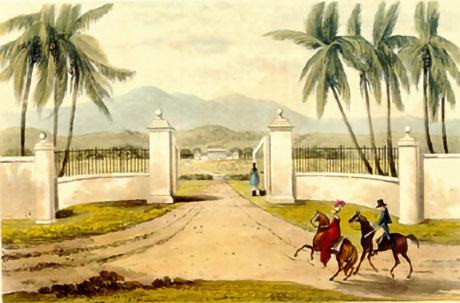
Like many other rich planters of the period, Custos John Palmer lived on credit, which was fine as long as the sugar boom lasted. Eventually, in 1792, his creditors foreclosed, and he was forced to mortgage Rose Hall and Palmyra, moving to his more modest house at Brandon Hill, where he died in 1797.
Rose Hall went into receivership, and the properties fell into the hands of the Court of Chancery which appointed receivers.
The receivers ran the property and saw to the administration of slave labour, providing such plantation supplies, food, clothing, medical attention, doled out punishment if necessary, sold and shipped the sugar and rum.
They were responsible for submitting accounts which were officially lodged with the Court, and which survive in the Jamaica Archives at Spanish Town.
In all these accounts, there is no mention of money being spent on repairing or maintaining either Rose Hall or Palmyra Great House hence it is assumed that Rose Hall and Palmyra were empty, except for housekeepers, from 1792 onwards.
In 1818, John Rose Palmer, the great-nephew and heir to John Palmer came to Jamaica, to try and wrest Rose Hall and Palmyra from the hands of the Court of Chancery. “Although he managed to become appointed official receiver to his own estates, he was so hard up that he was compelled to mortgage the receivership to Henry Martin Ancrum of London!,” Yates said.
In November 1827, John Rose Palmer died at Rose Hall, aged 42. During his brief life in Jamaica he had served regularly in Montego Bay as a J.P.; in 1824 he was appointed to administer the neighbouring estate of Running Gut whilst George Whithorne Lawrence, the owner, was absent in Scotland.
“When his death was reported in the Royal Gazette and in the Kingston Chronicle some four or five days after it took place, his obituary read "His intrinsic worth, kind heart, and generous disposition obtained him the esteem of all his acquaintance, but to his family, and those friends who had the pleasure of being intimate with him, his loss is irreparable."
“Even allowing for a measure of hyperbole, it is obvious he was quite a prominent citizen. It was his wife who was supposed to have murdered this well-known man, and to have lived on at Rose Hall enjoying the embraces of her lovers until she in turn was murdered.
“But can anyone, who has ever read a detective thriller, suppose that such a murder at such a prominent place could have escaped detection and the attention of the newspapers of the day? Where is the evidence? And who was the supposed criminal anyway? The answer is, there was no murder, no motive and no evidence,” Yates declared.
Annie Mary Paterson of Kew in Hanover
But where does the infamous Annie Palmer come into this Rose Hall story? Where is this evil white witch who spent time in Haiti learning voodoo? When does she enter this bankrupt Rose Hall and Palmyra Estate?
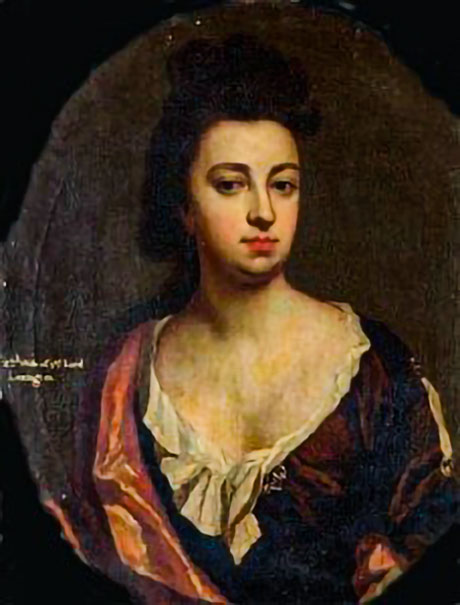
Prior to his death, John Rose Palmer had met and married Annie Mary Paterson the only child of John Paterson and his wife Julian, of Baulk, near Lucea.
Her paternal grandparents were Scotsman, Dr. John Paterson and his wife Deborah McKenzie who had settled in Hanover.
Her maternal grandparents were the Hon. William Brown, a Scotsman and Custos of Hanover, and his wife, Mary Kerr James of Kew near Lucea.
John Rose Palmer, met 17 year old Annie Mary and were married on March 28, 1820, at Mount Pleasant, St. James, the home of retired naval officer and professional planting attorney Captain David and Mrs. Boyd.
“The young couple, so we are told by the Royal Gazette, were married again in England, on their honeymoon. This was not unusual as sometimes doubt was expressed as to the validity of marriages in those days,” Yates said.
When they returned to Jamaica, the couple moved to Rose Hall, “not to a life of luxury but one of money worries, as so often to newly-weds Annie Mary did not enjoy her married life for long for John Rose Palmer died seven years later, some £6,000 in debt. His personal possessions, including £350 worth of plates and some debts owing him totalled just over a thousand pounds sterling. What was his wife to do? She had no money, no real claim to the estate, no slaves, nothing,” Yates informed.
In 1830, after the death of her husband, Annie left to seek shelter elsewhere, and eventually sold out whatever rights she may have had in Rose Hall and Palmyra for £200 sterling to a Dr. Bernard in Bristol.
Two slaves may have been allowed by the receivers to accompany Mrs. Annie Palmer to her new abode. However, according to officially enrolled slave returns, she had in June 1829 four slaves, Cymir aged 30, Sarah Smith aged 30, and Sarah's two children Alexander and Charles aged 6 and 8 respectively.
It is interesting to note that Rose Hall and Palmyra Estates were not burned in the Sam Sharpe war of 1831-32 as there was no one at the Rose Hall Great House as the plantation had been in receivership from 1792.
In 1833 Annie Mary Palmer is listed as being at Bellevue, St. James, with 8 slaves. Bellevue and Bonavista3 are both shown by the Jamaica Almanacks as belonging to the Bernard family, and may well have been both part of the same property, as both names mean "Beautiful View."
In 1842, William Augustus Dickson, a Scottish merchant of Lucea, and her uncle by marriage, left a will which stated "my settlement in St. James called 'Bellevue' I leave to Mrs. Palmer for life." It is not clear how he obtained Bellevue, nor how Annie Mary acquired the slaves.
Probably Dickson obtained land at Bonavista or Bellevue from the dissolution of the Bernard family estates when they got into trouble, and left his niece in charge. In any case, she was a connection to the Bernards, one of whom had bought up her rights to Rose Hall and Palmyra.
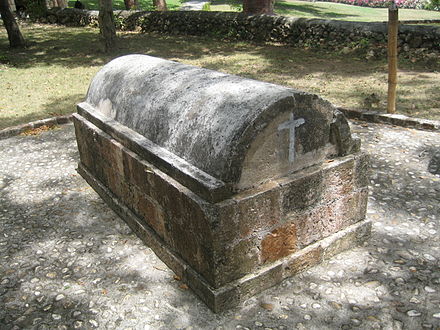
Annie Mary Palmer, never married again and had no children. She died at Bonavista, near Anchovy, in 1846 and was buried in the Parish Church in Montego Bay by the Rev. T. Garrett on July 9 1846. No tombstone has survived to mark the spot where she was buried.
By her will, which may be seen in the Jamaica Archives, she left everything to Giolia Mary Spence, her goddaughter, aged two, the child of Dr. and Mrs. Patrick Spence of Montego Bay.
This, of course, was the true and non-dramatic end of a woman-allegedly murdered twelve or more years before by her slaves, long after the abolition of slavery.
Geoffery Yates then tried to determine how this monstrous legend grew up? He pointed out that “all the commonly accepted sources are confused and contradictory, and Roby, in his serious "History of St. James" (1849) does not mention it at all.
Nowhere in the official archives of Jamaica is there anything I have yet discovered which links either Rosa or Annie Mary Palmer with any form of crime, debauchery or unnatural death.”
It was a Rev. Waddell who first mentions the strangling of a Mrs. Palmer at Palmyra in 1830. As Rosa was not murdered and Annie Mary Palmer was still alive, who could it have been whom he was told was strangled?
“Probably he was told some confused story by a slave or plantation hand talking patois, which he did not understand correctly, and which related to some murder which took place perhaps a 100 years before, when such things were more likely,” Yates questioned.
Somewhere, a far-off tale of murder has become attached to Rose Hall and Palmyra and to the two Mrs. Palmers who lived there.
Hearsay rumours were taken as gospel truth, and once the legend was given currency, by James Castello in his pamphlet of 1868, it stuck. Because it was in print, it became believed as true and then people started to look for blood stains and ghosts and saw them.
Delisser gave the legend far wider currency in his novel "The White Witch of Rose Hall" than did Castello. The legend throve, the facts disappeared. Now it has become so firmly established, and I frankly admit it is a good story-that a film is to be made of it,” Yates concluded.
-30-

 En
En  Ar
Ar